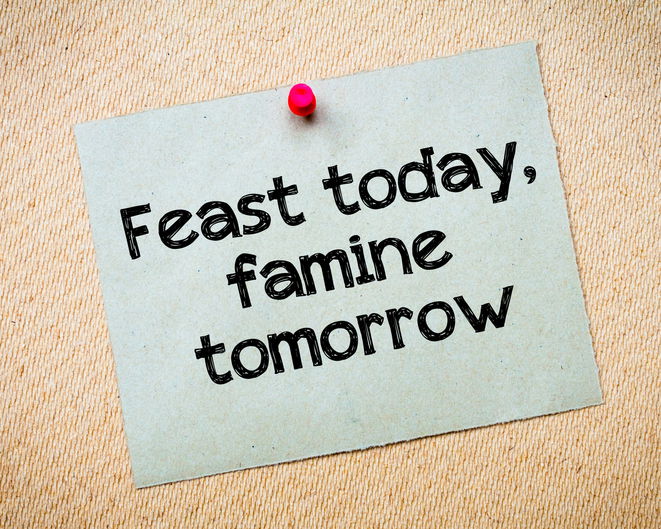Intermittent Fasting Cycles Between Feast and Famine

According to research published in the journal Obesity Reviews, intermittent fasting is less likely to cause muscle loss than a diet based on a low-calorie food intake. Moreover, some participants shed up to seven percent of potentially dangerous belly fat from around their waist while fasting. However, completing studies on humans can be difficult, as it is often difficult to get people to stick with it for the required length of time. Some protocols address this problem by allowing the individual to cycle between low-calorie intake for a brief time followed by unrestricted meals. Fasting also saves time and money, and some people claim it makes them feel lighter, brighter and sharper.
- Fast-Mimicking Diet - Developed by a biogerontologist named Valter Longo, the fast mimicking diet came from years of study on the role of starvation and nutrient response genes on cellular protection against aging and chronic diseases, as a method of improving longevity.
- Skipping a Meal Fast - With spontaneous meal skipping, you do not need to follow a structured schedule to reap the benefits. Simply skip meals from time to time, especially when you don't feel hungry or are too busy to stop and eat.
- The Crescendo Method - This fasting technique is used on non-consecutive days of the week and involves 12 to 16 hours of fasting on rest days as opposed to training days. The Crescendo Method is a popular choice with women.
- 24 to 36-Hour Fasts - Similar to a fasting-mimicking and the elemental diet, occasional prolonged fasting is followed for 3 to 4 days and is repeated up to four times per year.
Since most of the research on intermittent fasting is conducted using animal studies, future studies will still be needed to examine the effects of fasting on humans for longer periods. Nonetheless, experts do agree that you should avoid significant sources of calories in what you drink and consume plenty of water while fasting. Drinks like black coffee or unsweetened tea may suppress hunger to make fasting easier. After all, intermittent fasting is not an exercise in starvation. It differs from the latter in that fasting is the deliberate and controlled absence of food. If you need help designing a fasting diet, contact Metabolic Research Center for a free, no-obligations consultation.
*NOTE: Due to a difference in hormonal makeup, women have special considerations when fasting. Intermittent fasting is not a good idea for women under 18 years of age, those with a lean body profile, or those with medical conditions, such as hypothyroidism or a history of eating disorders. Ask your physician about an appropriate fasting protocol for you.
By submitting this form, you agree to receive marketing text messages from us at the number provided, including messages sent by autodialer. Consent is not a condition of any purchase. Message and data rates may apply. Message frequency varies. Reply HELP for help or STOP to cancel. View our Privacy Policy and Terms of Service.

